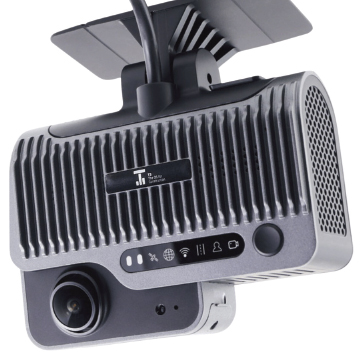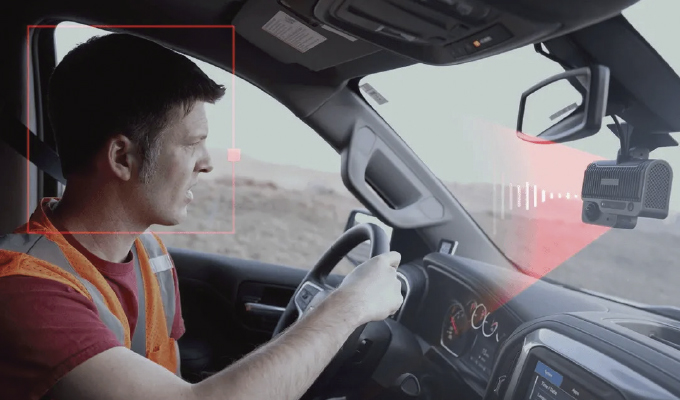Commercial vehicles have seen significant technological upgrades over the past few decades. Among the most impactful advancements are telematics and dashcams, which have revolutionized how commercial fleets operate.
TELEMATICS
This refers to the integration of telecommunications and informatics, allowing for real-time data collection and analysis from vehicles. This technology provides insights into driving behavior, vehicle performance, and overall fleet operations.
DASHCAMS
These, on the other hand, capture video footage of the road and driver, offering invaluable visual records that enhance safety and accountability.
The benefits of telematics and dashcams include:
- Improving road safety for everyone;
- Reducing expenses;
- Preventing costly claims; and,
- Improving logistics and tracking.
Let’s look at each of these benefits.
IMPROVING ROAD SAFETY FOR EVERYONE
Reducing Accident Rates
Investing in telematics and dashcams significantly reduces accident rates in commercial fleets. Telematics systems monitor driving behavior in real-time, capturing data on:
- Speed;
- Harsh braking;
- Rapid acceleration; and,
- Abrupt lane changes.
This continuous tracking helps fleet managers identify and address risky driving behaviors.
Immediate feedback and coaching are crucial for improving safety. Telematics systems alert both drivers and fleet managers to unsafe habits, enabling prompt corrective actions. Regular coaching sessions based on telematics data further help drivers develop safer driving practices, contributing to a safer road environment.
Driver Accountability
Dashcams enhance safety by ensuring driver accountability. They provide continuous video footage of the road and driver actions, verifying compliance with safety protocols. For example, dashcam footage can confirm seatbelt use, proper following distance, and adherence to speed limits.
Telematics data also reinforces driver accountability. Detailed reports highlight instances of unsafe behavior, allowing fleet managers to hold drivers accountable and promote safer driving practices. Together, these technologies provide essential tools and data to create a safer road environment.
REDUCING EXPENSES AND AVOIDING COSTLY LAWSUITS
Accident Documentation
Dashcams capture video evidence during accidents, offering a clear and unbiased account of events. This footage can be instrumental in determining fault and preventing disputes. Additionally, telematics systems provide detailed reports on vehicle speed, location, and other critical factors at the time of incidents. This data helps reconstruct the events leading up to an accident, offering valuable insights and supporting evidence.
Defending Against False Claims
Dashcams are particularly effective in defending against false claims. In the event of a dispute, dashcam footage can refute fraudulent claims by providing clear visual evidence of what occurred. The ability to present indisputable evidence not only protects the fleet from unjust settlements but also discourages fraudulent claims, as potential fraudsters know they are being recorded.
Lowering Insurance Premiums
The use of telematics and dashcams can lead to lower insurance premiums. Insurance companies recognize the safety and accountability benefits of these technologies and often offer discounts to fleets that utilize them. An insurance advisor specializing in commercial fleets can help businesses find carriers offering these discounts.
The reduction in accidents and claims resulting from improved driving behavior and accurate accident documentation leads to better insurance rates. Over time, this can result in substantial savings for fleet operators, making the investment in telematics and dashcams financially beneficial.
These technologies provide clear financial benefits while enhancing overall fleet safety and accountability.

IMPROVING LOGISTICS AND TRACKING
Real-time Fleet Tracking
Telematics systems provide real-time fleet tracking, giving fleet managers enhanced visibility of vehicle locations. This information can aid in resource allocation and create logistical efficiencies.
Maintenance and Compliance
Telematics enhances maintenance and compliance, two crucial aspects of fleet management. It enables predictive maintenance by monitoring vehicle performance and identifying issues early, preventing breakdowns and costly repairs.
Telematics also ensures compliance with industry regulations by tracking maintenance schedules and performance metrics. This helps fleet managers keep vehicles in line with regulatory standards, avoiding fines and legal issues while enhancing overall fleet safety and reliability.
These advancements lead to increased operational efficiency and cost savings.
ADDITIONAL BENEFITS
Driver Training and Development
Telematics and dashcams enhance driver training by identifying specific needs based on driving data and providing real-life footage for coaching. This targeted approach improves driving skills and promotes best practices.
Operational Efficiency
These technologies streamline administrative tasks with automated reporting and provide data analytics for better decision-making. This leads to more efficient fleet operations and cost savings.
Environmental Impact
Telematics help reduce the environmental impact by optimizing routes and minimizing idling, which lowers fuel consumption and emissions. Effective fuel management promotes sustainability and reduces costs.
EMBRACING INNOVATION
The adoption of telematics and dashcams in commercial fleets marks a pivotal moment in the industry’s evolution. These technologies offer a wealth of benefits that are essential for modern fleet management.
It’s not just an investment in safety; it’s investing in the bottom line. These tools offer unparalleled insights into driver behavior, vehicle performance, and accident prevention, ultimately leading to reduced accident rates and lower insurance premiums.
A trusted advisor can help navigate the complexities of commercial auto insurance, minimize risks, and ensure long-term success. Work together to harness the power of these technologies and secure a safer, more efficient, and cost-effective future for your commercial fleet.
About the Author
Robert Worden, CSD, construction risk advisor, at Leif Assurance, Inc. To learn more, visit www.insurancebuiltforcontractors.com.




